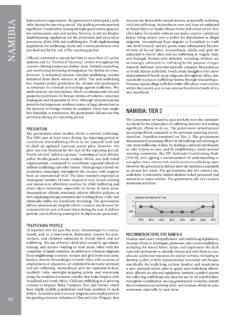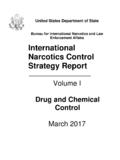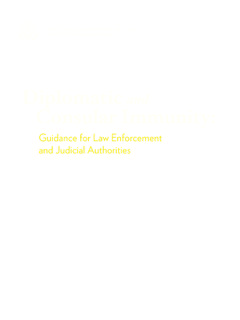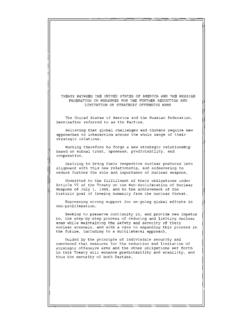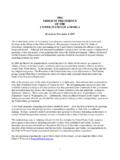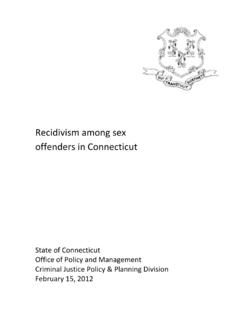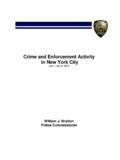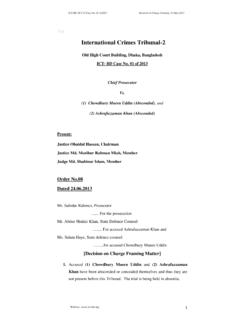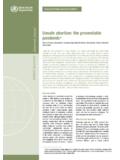Transcription of MEXICO 2015 HUMAN RIGHTS REPORT - State
1 MEXICO 2015 HUMAN RIGHTS REPORT EXECUTIVE SUMMARY MEXICO , which has 31 states and a federal district, is a multiparty federal republic with an elected president and bicameral legislature. In July 2012 President Enrique Pe na Nieto of the Institutional Revolutionary Party (PRI) won election to a single six-year term in elections observers considered free and fair. Citizens elected members of the Senate in July 2012 and members of the Chamber of Deputies in June. Observers considered the June 2015 legislative and gubernatorial elections free and fair. Civilian authorities generally maintained effective control over the security forces. The most significant HUMAN RIGHTS -related problems included law enforcement and military involvement in serious abuses, such as unlawful killings, torture, and disappearances. Impunity and corruption in the law enforcement and justice system remained serious problems.
2 Organized criminal groups killed, kidnapped, and intimidated citizens, migrants, journalists, and HUMAN RIGHTS defenders. The following additional problems persisted: poor prison conditions; arbitrary arrest and detention; threats and violence against HUMAN RIGHTS defenders and journalists; threats and violence against migrants; violence against women; domestic violence; abuse of persons with disabilities; threats and violence against some members of the indigenous population; threats against lesbian, gay, bisexual, transgender, and intersex (LGBTI) persons; trafficking in persons; and child labor, including forced labor by children. Impunity for HUMAN RIGHTS abuses remained a problem throughout the country with extremely low rates of prosecution for all forms of crime. Neither general information about government investigations of HUMAN RIGHTS allegations nor information about specific cases was easily available to the public.
3 Section 1. Respect for the Integrity of the Person, Including Freedom from: a. Arbitrary or Unlawful Deprivation of Life There were numerous reports the government or its agents committed arbitrary or unlawful killings, often with impunity. Organized criminal groups also were implicated in numerous killings, often acting with impunity and at times in league with corrupt State , local, and security officials. The National HUMAN RIGHTS MEXICO 2 Country Reports on HUMAN RIGHTS Practices for 2015 United states Department of State Bureau of Democracy, HUMAN RIGHTS and Labor Commission (CNDH) reported 32 complaints for deprivation of life between January and October 31. In November the CNDH released a REPORT regarding the January 6 killing of 10 individuals in Apatzingan, Michoacan. The CNDH REPORT found the federal police responsible for grave HUMAN RIGHTS violations in six of the deaths, at least one of which it classified as an extrajudicial execution.
4 Members of the army also were implicated in illegal detentions and injury to a number of citizens. A separate criminal investigation continued at year s end. On May 22, federal police killed 42 alleged armed criminals in a gunfight near Tanhuato, Michoacan; one police officer also was killed. Federal authorities claimed that police were in pursuit when the criminals attacked, and that police returned fire to subdue the group. Families of the victims and civil society sources, however, asserted the bodies showed signs of torture. The Michoacan Attorney General s Office began an investigation, which was joined in August by the federal Office of the Attorney General. On May 26, the CNDH also initiated an investigation. During its visit in October, a mission of the Inter-American Commission on HUMAN RIGHTS (IACHR) pressed the government to continue its investigation of the case.
5 The investigations remained ongoing at year s end. On July 7, the commander of the 97th Infantry Battalion allegedly ordered and participated in the illegal detention and extrajudicial killing of seven suspected members of an organized criminal group in Calera, Zacatecas. On July 31, a federal judge in Zacatecas ordered the arrest of the commander and three other military officers on charges of forced disappearance and premeditated aggravated homicide. At year s end all four were being held in pretrial detention at the military prison in Mazatlan, Sinaloa. The National Defense Ministry (SEDENA), which provided forensic and judicial assistance to the civilian-led investigation, transmitted its findings to the federal Attorney General s Office (PGR). Civilian criminal proceedings continued in the June 2014 killings of 22 suspected criminals in Tlatlaya, State of MEXICO .
6 In June the Attorney General s Office (PGJ) for the State of MEXICO and the PGR confirmed that 11 of the 22 individuals were executed, at least half of whom had surrendered before they were killed. In November 2014 the PGR charged three soldiers formerly assigned to SEDENA s 102nd Infantry Battalion with homicide, tampering with evidence, and abuse of authority and brought lesser charges against four additional soldiers. In early October a federal district judge dropped the charges against four of the soldiers due to insufficient evidence. The PGR appealed the ruling. Those charged remained in MEXICO 3 Country Reports on HUMAN RIGHTS Practices for 2015 United states Department of State Bureau of Democracy, HUMAN RIGHTS and Labor pretrial confinement, and the four released from civil charges continued to face charges under the military justice system.
7 Additionally, seven police officers from the State of MEXICO were charged in July with torturing three women who witnessed the executions. After the Federal Institute of Access to Public Information and Data Protection ordered it to do so, the PGR released documents in December 2014 that revealed municipal police were complicit in the 2010 killing of 72 migrants in San Fernando, Tamaulipas. The documents also showed police involvement in the deaths of 193 other victims found in mass graves in Tamaulipas in 2011. On July 20, a federal judge in Nuevo Leon sentenced former corporal Juan Ortiz Bermudez to 18 years imprisonment on conviction of intentional homicide in the 2010 killing of two unarmed civilians. It was the first time a civilian judge penalized a military officer in Nuevo Leon. On March 2, a federal judge in Sinaloa sentenced four soldiers to nine years and four months in prison for intentional homicide in the 2008 killing of unarmed civilians.
8 B. Disappearance There were numerous reports of forced disappearances by security forces as well as numerous cases of disappearances related to organized criminal groups. In data collection the government often merged disappeared persons with missing persons, making it difficult to gather accurate statistics on the extent of the problem. While the federal criminal code includes provisions on forced disappearances, the subfederal jurisdictions lacked legislation to define consistently this crime; 15 states classified forced disappearance as distinct from murder or kidnapping. Investigation, prosecution, and sentencing for the crime of disappearance remained rare. In September government agencies reported to the Congress that 25,230 persons were recorded as missing or disappeared as of December 31, 2014. According to the National Data Registry of Missing Persons (RNPED), 24,812 of the cases came under State jurisdiction, while 418 cases were under federal jurisdiction.
9 The PGR also reported that 74 persons had been located as of December 2014, 70 of whom were Mexican nationals. According to the government, the causes for disappearances included voluntary absence, migration, death, and unlawful MEXICO 4 Country Reports on HUMAN RIGHTS Practices for 2015 United states Department of State Bureau of Democracy, HUMAN RIGHTS and Labor imprisonment. The CNDH received 12 complaints of enforced or involuntary disappearances from January through October 31. On September 6, a team of IACHR experts released a REPORT critical of the government s initial investigation of the September 2014 disappearance of 43 students from a rural teachers college in Ayotzinapa, Guerrero State , and the concomitant killings of six others. The IACHR and the original government investigation concluded the students were arrested by local police and then handed over to drug traffickers in Iguala, Guerrero.
10 In October the government extended the mandate of the team of experts until April 30, 2016, and agreed to restart the investigation and incorporate the recommendations from the September REPORT , including the creation of a new investigation team to work alongside IACHR experts and the government. In September government officials stated foreign forensic experts had identified the remains of a second student (in addition to the remains of one student identified in 2014). In November the Attorney General s Office announced the creation of a new special unit to investigate the students disappearance. In December the Executive Committee for Victims Assistance (CEAV) approved the first reparations to the family of one of six individuals killed during the incident. On August 18, a federal judge in Nuevo Leon issued the country s first civilian conviction of a military officer for the disappearance of a civilian.
